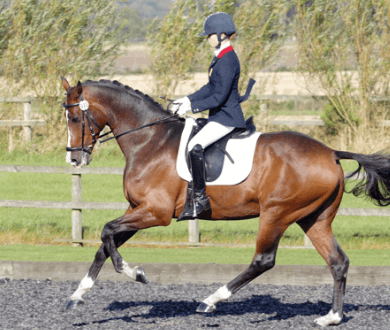How do riders communicate with their horses in dressage?

Dressage, an equestrian sport characterized by the harmonious partnership between horse and rider, involves a high level of communication that is both subtle and intricate. This article will delve into the various methods by which riders communicate with their horses in dressage, highlighting the nuances and complexities of this unique form of interaction.
The Essence of Communication in Dressage
At its core, dressage is about the artful communication between a rider and their horse. It’s a dialogue that goes beyond mere physical cues, encompassing an understanding of the horse’s psyche and emotions. This communication is not just about instructing the horse but also about listening and responding to its feedback.
The Role of Aids in Dressage
Leg Aids: The rider’s legs are crucial for directing the horse. Gentle squeezes or more assertive presses with the rider’s calves can signal the horse to move forward, increase pace, or engage in lateral movements. The positioning of the leg, whether it’s at the girth, behind it, or neutral, conveys specific instructions to the horse.
Seat and Weight Aids: The rider’s seat is a powerful tool in dressage. Subtle shifts in weight can communicate a wide range of commands from accelerating, decelerating, turning, or even the level of collection required. A deep, centered seat can encourage the horse to slow down or collect, while lightening the seat can signal an increase in speed or a transition to a more extended movement.
Rein Aids: Reins are used not just for steering but also for communicating the degree of collection, bend, and pace. The tension, length, and positioning of the reins, combined with the rider’s subtle wrist movements, play a vital role in guiding the horse. It’s a delicate balance; too much tension can restrict the horse, while too little can lead to a lack of direction.
The Importance of Body Language and Emotional Connection
Rider’s Body Language: Dressage riders are highly attuned to their body language. The way a rider sits, their posture, the tension or relaxation in their body, all convey messages to the horse. Horses are incredibly sensitive to these non-verbal cues, responding to even the slightest changes in a rider’s body.
Emotional Connection: Successful dressage riders establish a deep emotional bond with their horses. They can sense their horse’s mood and energy levels, adjusting their communication accordingly. This bond is built over time through consistent, respectful, and empathetic handling both on and off the saddle.
Training and Consistency: The Key to Effective Communication
Effective communication in dressage is achieved through consistent training and practice. Both the horse and the rider need to learn and understand the language of aids. This training involves repetition, patience, and a gradual increase in the complexity of the tasks. It’s essential for the rider to be consistent in their aids, as mixed signals can confuse the horse and hinder its learning.
Advanced Communication: Beyond the Basics
As the horse and rider progress in their training, their communication becomes increasingly refined. Advanced dressage movements such as pirouettes, piaffes, and flying changes require precise and nuanced communication. At this level, the aids become almost imperceptible to onlookers, highlighting the deep connection and understanding between the horse and rider.
Conclusion
In conclusion, communication in dressage is a multifaceted and intricate process. It encompasses a range of physical aids and extends to understanding the horse’s emotional and psychological state. The key to successful communication lies in consistent training, a deep bond between horse and rider, and an empathetic approach to understanding the horse’s responses. The beauty of dressage lies in this silent, almost invisible dialogue, a testament to the powerful bond shared between horse and rider.